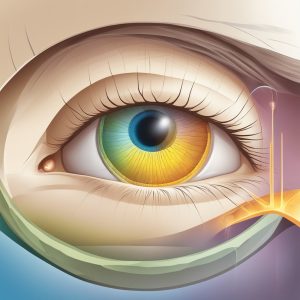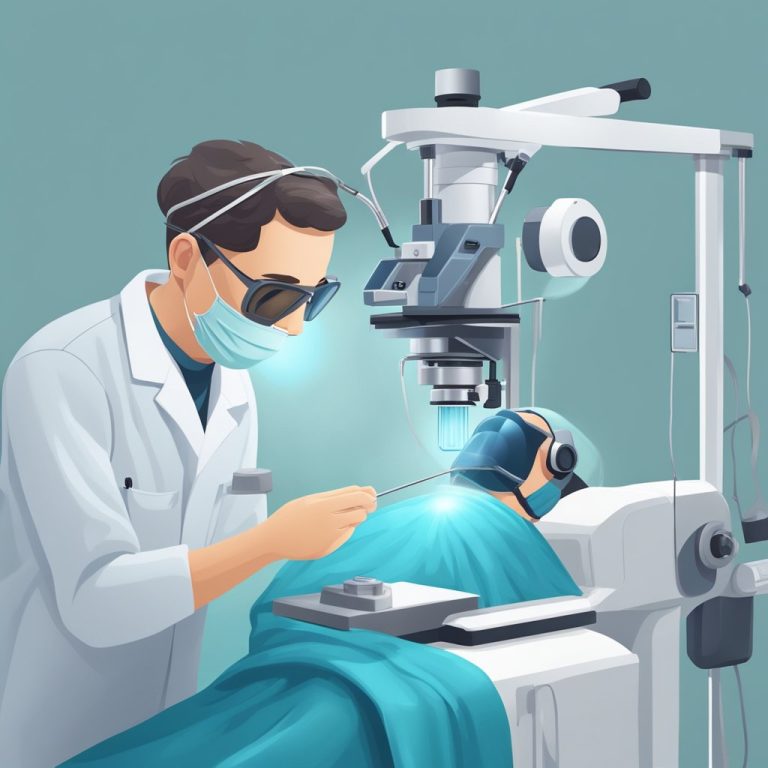What does the start of glaucoma look like?
What Does the Start of Glaucoma Look Like: Early Signs and Symptoms

Glaucoma often begins unnoticed. You may not experience any pain or significant change in your vision initially because glaucoma typically starts by affecting the peripheral or side vision, which can be subtle and easily overlooked. Early symptoms might include mild blurriness or the appearance of halos around lights, both of which are commonly dismissed as normal visual fluctuations.
The early signs of glaucoma may include vision changes like less peripheral or side vision, seeing rainbow-colored halos around lights, blurred vision, and trouble making out detail or reading—especially in dim lighting conditions or low-contrast environments.
Understanding what glaucoma looks like at the start is crucial to catching the disease early. Typically, open-angle glaucoma, the most common form, develops slowly and without early warning signs. Less common types like acute angle-closure glaucoma may cause sudden, noticeable symptoms such as severe eye pain, nausea, and redness in the eyes. While vision loss from glaucoma is irreversible, identifying and treating the condition early can help protect your eyesight.
Key Takeaways
- Glaucoma’s initial symptoms can be easily missed, as they often start as simple blurriness or minor visual disturbances.
- Recognizing the early signs of glaucoma is vital for prompt treatment and safeguarding vision.
- Early treatment of glaucoma can prevent or slow down the progression of vision loss.
Understanding Glaucoma
Glaucoma is a group of eye conditions that can cause irreversible damage to your optic nerve, essential for vision. This damage can lead to blindness if not properly diagnosed and managed.
Types and Causes
Glaucoma primarily arises from an increase in intraocular pressure (IOP), which damages the optic nerve. The two main types of glaucoma are:
- Open-angle glaucoma: This is the most prevalent form and is often asymptomatic in its early stages. Fluid passes too slowly through the drainage angle, raising IOP subtly yet persistently.
- Angle-closure glaucoma: Less common but acute and sight-threatening, where the drainage angle between the iris and cornea becomes blocked abruptly, causing rapid vision impairment.
Common causes include genetic predisposition, structural defects of the eye, or elevated eye pressure.
Signs and Early Detection
Stay vigilant for early symptoms, as early detection is crucial in preventing vision loss from glaucoma. Initial signs may include:
- Progressive loss of peripheral vision, typically in both eyes
- Appearance of blind spots in your field of vision
Routine eye exams with your eye doctor are essential for early detection, as glaucoma is often asymptomatic before significant nerve damage has occurred.
Diagnostic Procedures
A definitive diagnosis of glaucoma involves several assessments:
- Visual field test: Evaluates peripheral vision and can identify blind spots.
- Tonometry: Measures eye pressure. Elevated pressure is a significant risk factor for optic nerve damage.
- Comprehensive eye exam: Includes inspecting the optic nerve for signs of damage.
Regular eye exams are imperative to catch glaucoma early.
Risk Factors and Prevention
Several factors increase your risk of developing glaucoma, and awareness can foster prevention. Key risk factors include:
- Age: Individuals over 60
- Family history of the condition
- Certain medical conditions, such as diabetes and high blood pressure
Maintain regular check-ups, especially if you have risk factors, to enable timely management and prevent serious vision loss.
Treatment and Management
Effective treatment and management of glaucoma are crucial to slowing the progression of the disease and preserving your vision. The goal is to reduce intraocular pressure to prevent further damage to the optic nerve and minimize the risk of vision loss.
Medical Interventions
You can manage the early stages of glaucoma primarily through prescription eye drops. These medications lower the pressure in your eye either by decreasing fluid production or improving drainage. Oral medicines might be prescribed if eye drops alone don’t sufficiently control the pressure. Regular use of these treatments is vital to prevent blind spots and permanent vision loss.
Surgical Options
When medical interventions are not enough, various surgical options become necessary. Among these are:
- Laser Treatment: Procedures such as laser trabeculoplasty help improve drainage in your eye.
- Implant: A small device can be inserted into the eye to facilitate fluid drainage.
- Trabeculectomy: This is a more conventional surgery where a part of the eye drainage system is removed to enhance fluid outflow.
- Laser Peripheral Iridotomy: Often used for angle-closure glaucoma, this procedure creates a small hole in the iris to improve fluid flow.
Each surgical method carries potential risks and benefits, which you should discuss in detail with your ophthalmologist.
Living with Glaucoma
Adjusting to life with glaucoma means regular monitoring of your vision and adhering to treatment plans. Make lifestyle adjustments to support your eye health, such as protecting your eyes from injury and managing other health conditions that could exacerbate glaucoma. Awareness of your visual limitations is crucial, especially if you experience low vision or blind spots, which may require the use of vision aids or modifications to your environment to maintain safety and independence.
Frequently Asked Questions
Understanding the initial symptoms and treatment options for glaucoma is essential for protecting your eye health.
What is typically the initial symptom of developing glaucoma?
Often, early glaucoma presents no symptoms, which leads many individuals to remain unaware of the condition until it has progressed. Subtle vision loss may start, usually in the peripheral vision.
Can the onset of glaucoma be effectively treated or reversed?
While the damage caused by glaucoma cannot be reversed, early detection and treatment can help slow or prevent vision loss, especially if the disease is detected in its early stages.
How is glaucoma identified during an eye examination?
During an exam, eye pressure is measured and the optic nerve is evaluated for damage. Advanced tests can detect problems with peripheral vision and other early indicators of glaucoma.
What are the common treatment options for early-stage glaucoma?
Treatment often starts with prescription eye drops or oral medication to reduce eye pressure. Depending on your situation, laser treatment or surgical procedures might be suggested.
What differences are there between the various types of glaucoma?
Primary open-angle glaucoma develops slowly and is the most common form. In contrast, angle-closure glaucoma is a rapid-onset emergency condition. Normal-tension and congenital glaucoma are less common but still significant.
How can one recognize the early warning signs of glaucoma?
Early warning signs might include difficulty adjusting to dark rooms, trouble with peripheral vision, or seeing halos around lights. If you notice any changes in your vision, consult your eye care provider immediately.






